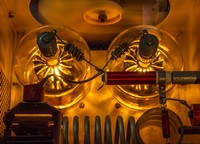 ZS2M/ZS6DX/V51VE
ZS2M/ZS6DX/V51VE
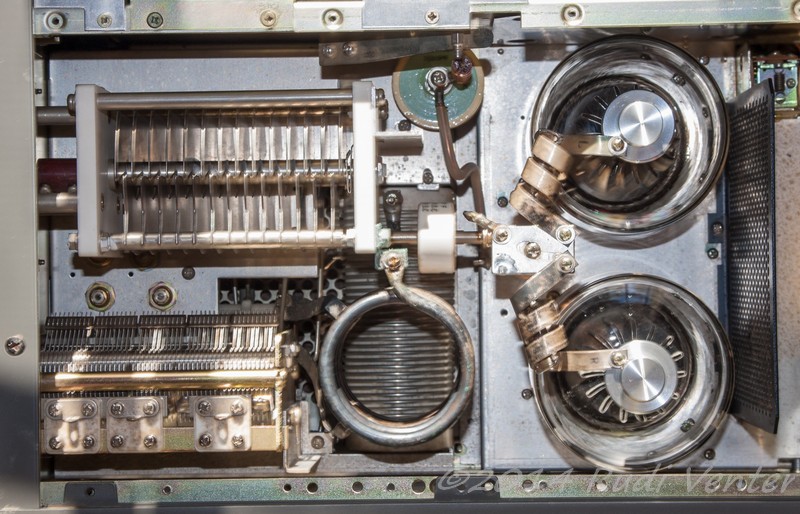
Satellite Communications
 ZS2M/ZS6DX/V51VE
ZS2M/ZS6DX/V51VE

Satellite Communications
Update 27/9/2023: With some better
weather I managed to get some work done on my QO-100 Satellite station today.
After trying one more time to get the 120cm dish going I gave up and removed
it (not fun!) and replaced it with the little 70cm dish. I used the same LNB
and cabling.
My first attempt to get it aligned did not go well, same
results as with the larger dish! Could not believe it! I decided to see if
there was another issue. I did ask my supplier if the LNB he supplied was
standard or modified but he never replied (guess the items I have in my
shopping cart on his web page will stay right there!)
Anyway, I decided
to give and old DSTV LNB I had lying around a go. Once it was on the dish I
could actually see very weak signals! I quick trip up the ladder armed with a
laptop and a spanner was all that was needed, finally decent signals from
QO-100! To say I was happy would be a mayor understatement!
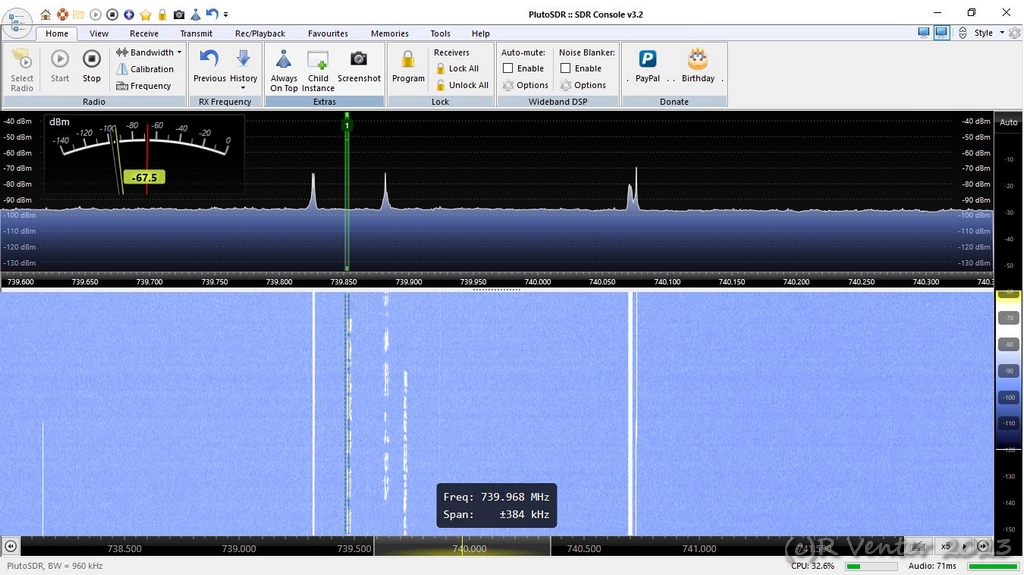
What a fantastic sight! Signals from QO-100!
The LNB was drifting quite a bit but fortunately
the SDR Console software allows you to lock on the beacon, once I had that
configured the frequency was rock solid.
Next task was to setup the
transmit side. I did not expect much due to a few things. Firstly there
was the dish that is a lot smaller than the one used in the original
"power needed" computations. Next there was the suspect pre-amplifier and
to crown it all the transmit antenna is only a small, linear polarized
yagi antenna, not circular polarized as it should be for QO-100.
Test showed that I could just see my transmission on the QO-100
transponder. At least the signal was strong enough that I could calibrate
the TX/RX frequency so that I can transmit on the frequency I am listening
on. I might just have enough power (no idea how much but most likely
around 1W) to make a CW contact, will try tomorrow if I have time.
So how to improve my signal into the bird? There are a few options. I can
try the larger dish again, but I am reluctant due to it's mounting
requirements especially taking the high winds we often have into
consideration. Next I could (and I should) replace the TX Yagi with a
decent helical antenna. I would have to build my own as there are non
available locally. They are not that difficult to build if you have a 3D
printer (I do have one) but my problem is that at this stage I gave no way
to measure the SWR on 24GHz. If I get it wrong I could damage my
(expensive) amplifier.
I think I need to acquire a VNA, it will be
useful to build antennas at the higher frequencies and will also be usable
on my HF antennas.
Another option would be to increase my
transmitted power, firstly I could (and again I should) get a decent
pre-amplifier that outputs at least 200mW, not the measly 12mW I am
getting now according to the specs of the one I have now. A second option
would be to run my amplifier on 24V. It can run on 12-24V but will only
produce it's rated power at 24V.
I think I will take as many of the
steps above as I can and see where I end up. I did listen to a few QSO's
CW and SSB, reception and signal strengths are fine on the small dish.
A CW signal received on 10GHz, a first in my
shack, the signal has travelled around 70 000km to get to my receiver!
Update 17/9/2023:
I am making progress on the assembly of my QO-100 ground station. I have now
done all the soldering and cable assembly with the exception of the final
connections to the dish. I will only do that one the dish is installed and
everything is where it should be, that way I can make sure the cables are
exactly the right length, at these high frequencies losses are high in the
cables so they should only be as long as absolutely needed. I still need to
make up the power harness as well, also waiting to complete the installation
first.
I do need to decide what I am going to do for the 5V power
supply, the Pluto Plus 2 needs 5V, up to 3A and the little 2.4GHz
pre-amplifier also needs 5V, what amperage I have no idea as it is not
mentioned anywhere. Will check the current draw once it is running, should not
be more than 1A I think.
All the software is setup and the Pluto is
working well, I tested the receive side with 145MHz and 30MHz transmissions. I
have now completed the assembly of the 2.4GHz transmit antenna that will feed
the dish. I connected this antenna to the Pluto and used it to TX tones on
2.4GHz (drive set to 0 gain so no idea how much power but very little). Since
the Pluto is full duplex I could monitor the signal on the RX side and it
sounds good and looks clean on the scope.
I still need to test the CW
TX but since I will be using a tone injected on a SSB signal I am sure it will
be fine. To generate the tone I will use the CWType program. It allows you to
connect a key or paddle to a serial port, works well. It can either key a
transmitter through a serial port (real or virtual for a SDR) and/or sent the
tones to a sound device. By using a virtual sound cable you can then use the
tone output as input on the SDR software to transmit the CW. It works on the
Flex so it should work the same on the Pluto.
The 1.2M dish is now also
assembled and I have the mounting hardware ready and the location has been
decided. All I need are 4 rawl bolts, will hopefully be able to get them
tomorrow morning from the local hardware store.
Almost ready to begin
the bit I am not looking forward too, aligning the dish! But it needs to be
done before the fun can start.
Update 16/9/2023:
I received a call early this morning from the local courier agent asking if I
can please come and pick up a parcel that would not fit in his car, I was
there in a flash!
The parcel was my QO-100 satellite station equipment.
The component that made it so large it would not fit in his car was the 1.2m
dish, fortunately it did fit in my car!
I had a quick look and
everything seems to be there with no shipping damage. I am still concerned
that I was supplied with the wrong pre-amplifier but the supplier insists that
it is the correct one, we will soon see!
There are a few small things
missing, some like 2 power supplies because the supplier did not have stock
and a few other things like cables and connectors because they were forgotten.
No big problem, I have power supplies, spare coax cable (for the LNB) and
connectors for the LNB cable. I received 1 power injector, all he had in stock
but I need two, again no problem as I can supply the pre-amplifier direct with
the needed 5V as it is going to be close enough to a power supply.
I
loaded the Pluto plus 2 drivers and installed the SDR Console software on my
shack computer. Once I connected the Pluto plus 2, via a USB cable, the
software detected the Pluto and it is receiving. I will test transmitting
later when I have an antenna. The Pluto can also be connected to the computer
with an Ethernet cable, will try that later but I think I will run it
connected with a USB cable as the whole "station" will be mounted outside just
below the dish and that is less than 2m away from my shack computer.


Computer connection, via USB or Ethernet, and
power supply side of the Pluto.

The output side of
the Pluto, 2 TX and 2 RX connectors for the 2 transceivers.
I have started putting everything together, first thing I did was to
mount the 20W 2.4GHz linear amplifier to a heat sink. The supplier did not
have heat sinks but a quick search through my "spares/junk" supply
produced a heat sink of the correct size, it used to be mounted on a 28MHz
to 430MHz transverters that I scrapped at least 25 years ago, see why you
should never "dump" stuff?

20W 2.4GHz linear amplifier.

Inside of the
amplifier, input at the bottom, output at the top.

Mounted on the heat
sink, electronic components work better and last longer when kept cool!
And yes, I only saw the cat hair after posting the photo here! Sometimes
my "helpers" can be a problem, I think I will simply pretend the cat hair
is there to give scale...

The pre-amplifier
that sits between the Pluto and the linear amplifier, needed to boost the
30mW output of the Pluto to a level high enough to drive the Linear
amplifier to a decent output level. This is the unit I am not so sure
about, this looks like a small signal receive pre-amplifier to me and what
I can find on the internet confirms that. Will try it but chances are
trying to transmit through it will "let the smoke out".

Power injector,
supplies 5V to the LNB via the coax cable.
Next major thing I need to do is to install the dish and line it up with
QO-100, unfortunately I will have to wait till the wind storm we have at
the moment, peaking 80-100km/h subsides before I can try that.
Update 12/9/2023:
I have been doing a
lot of reading and watched a few YouTube videos on the QO-100 satellite. I
also spoke to a local supplier to see what is available. Fortunately it looks
like I will be able to get most if not all the components from him.
I
still need to finalize the list with him but I have decided on a full SDR
station. Initially I was against that because none of the SDR solutions really
offer CW as an option. Some research and a few experiments with the SDR
software I plan to use has convinced me that I will be able to get a decent CW
signal from the SDR using software keying, a nice challenge!
Here are
the components I am going to acquire for my station.
Main radio: Pluto
Plus 2 SDR, this a dual RX/TX radio that covers from 70MHz to 6GHz out of the
box. This is a very versatile radio and I can see that I will use it for a few
other things as well!
Antenna will be a 1.2m dish. One of the
components not available is the 2.4GHz feed antenna for the dish but I will
build my own, most likely a 3D printed helical antenna.
The SDR will
output RF into a small pre-amplifier, the output from the pre-amplifier will
then feed a 20W 2.4GHz amplifier.
On the RX side the dish will focus the
10GHz signal on a low noise, high stability LNB that will down convert the
signal to around 700MHz. This signal will then be received my the Pluto Plus 2
SDR.
There are also a few small things needed like a "power injector"
to provide power to the LNB via the coax cable, a 5V and a 28V power supplies,
a heat-sink plus fan for the amplifier plus a bunch of coax and connectors.
I am planning on running SDR Console software as main software.
Hopefully everything is in stock so that I can start the project soon.
Late afternoon update: Unfortunately a few needed items are not in stock and
it will take about 3 weeks to get them, so it does not look like I would be
"on the birds" as soon as I hoped. Oh well, such is life!
Update 11/9/2023:
I have been looking for a new
challenge in amateur radio for a while, I love DX'ing and chatting to friends
as well as restoring/fixing older equipment and I will continue doing that but
what I need to stay enthusiastic and active is something different.
One
possibility is to get involved with satellite communications again (I did play
with satellites many years ago), it is technical and fun plus you are not so
restricted by band conditions. Often I have time during the day or evening but
then the bands are dead so my interest turns to other hobbies. With satellite
communication you do not have that issue, your only limit is that you have to
wait for a satellite to come over the horizon but even that has changed!
The Es`hail 2 (QO-100) is a geo-stationary satellite, that means that it
is visible 24 hours a day plus you do not have to track it as it does not
move! It uses a 2.4GHz up link and a 10GHz downlink. Since I am not equipped
for either of those frequencies in the shack I would need additional equipment
for the shack but that is half the fun! There are no "brand name" radios
available that covers those frequencies so the way to go is normally an
up-converter (usually from 144MHz or 28MHz) for transmit and a down converter
or SDR receiver "dongle" that covers 10GHz. Home-brew or at least matching of
different modules is normally the way to go and I love the challenge!
I
would also most likely need a 2.4GHz RF amplifier (10-30W) and a pre-amplifier
for 10GHz. A dish antenna would be needed as well but that I do have as it is
the same as what I have been using for my long distance FPV video and RC radio
links.
The challenge is to now to source the needed bits and pieces,
hopefully local to reduce waiting time. I am already excited!
I do need
to make a few decisions, how will I drive the up-converter? From a "satellite"
ready radio like my Yaesu FT-847? But a satellite ready radio is not really
needed as you do not have a fast moving satellite so there is no need to
compensate for Doppler effect. Easier might will be to use a radio with a good
spectrum display like the IC-7610 or Flex-5000A so that you can "see" other
stations in the satellite's pass-band. Fun times ahead! I think if I stick to
an up (and maybe down) converter that uses 28MHz I have many different radios
to select from and to play with.
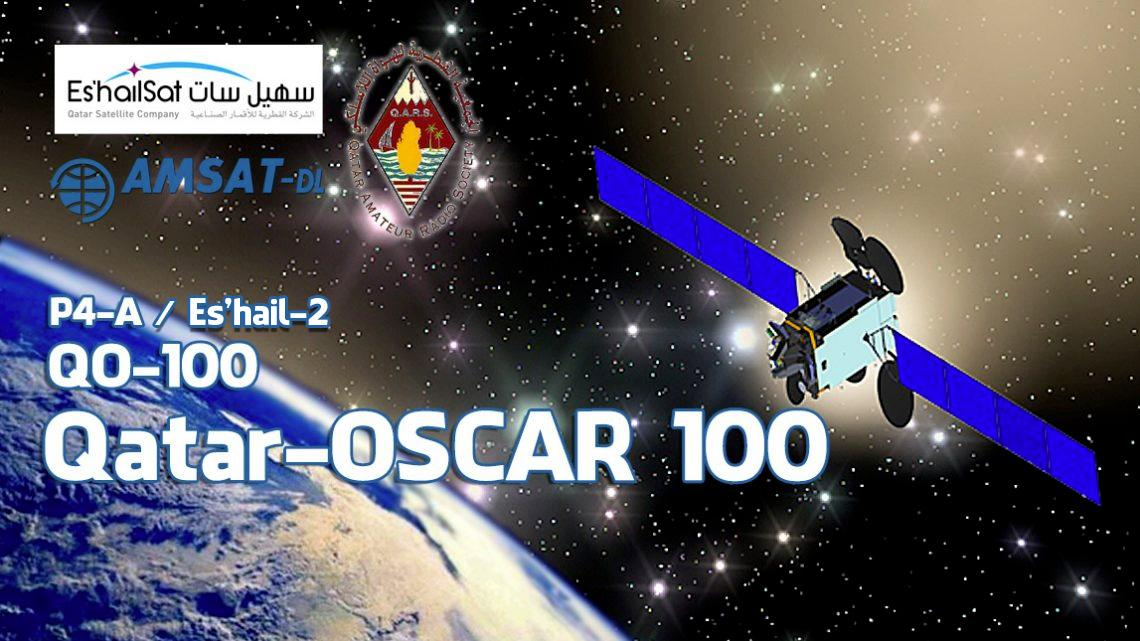
The satellite I am most interested in as it
offers 24/7 contacts and a nice technical challenge
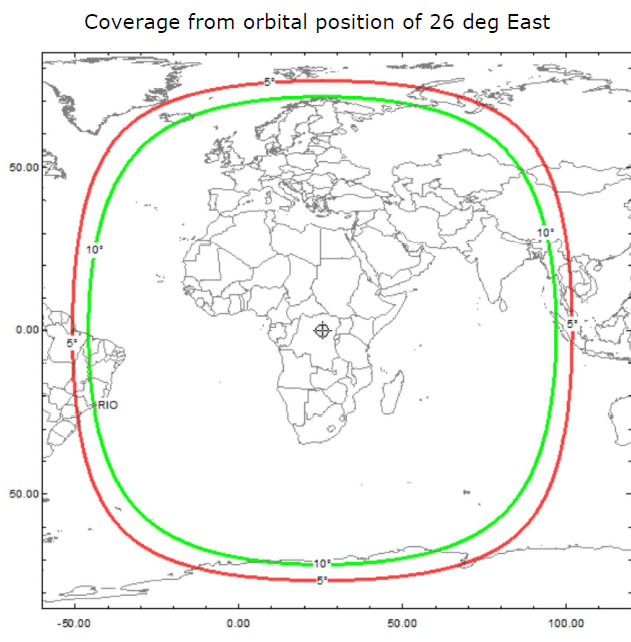
QO-100 "Footprint", lots of DX to work!
Other satellites will also be fun and I think I will start with them while I
am waiting for the QO-100 equipment, see you on the "birds"!
I will
report back here as I make decisions and acquire equipment.
(c)R Venter 1996-2023